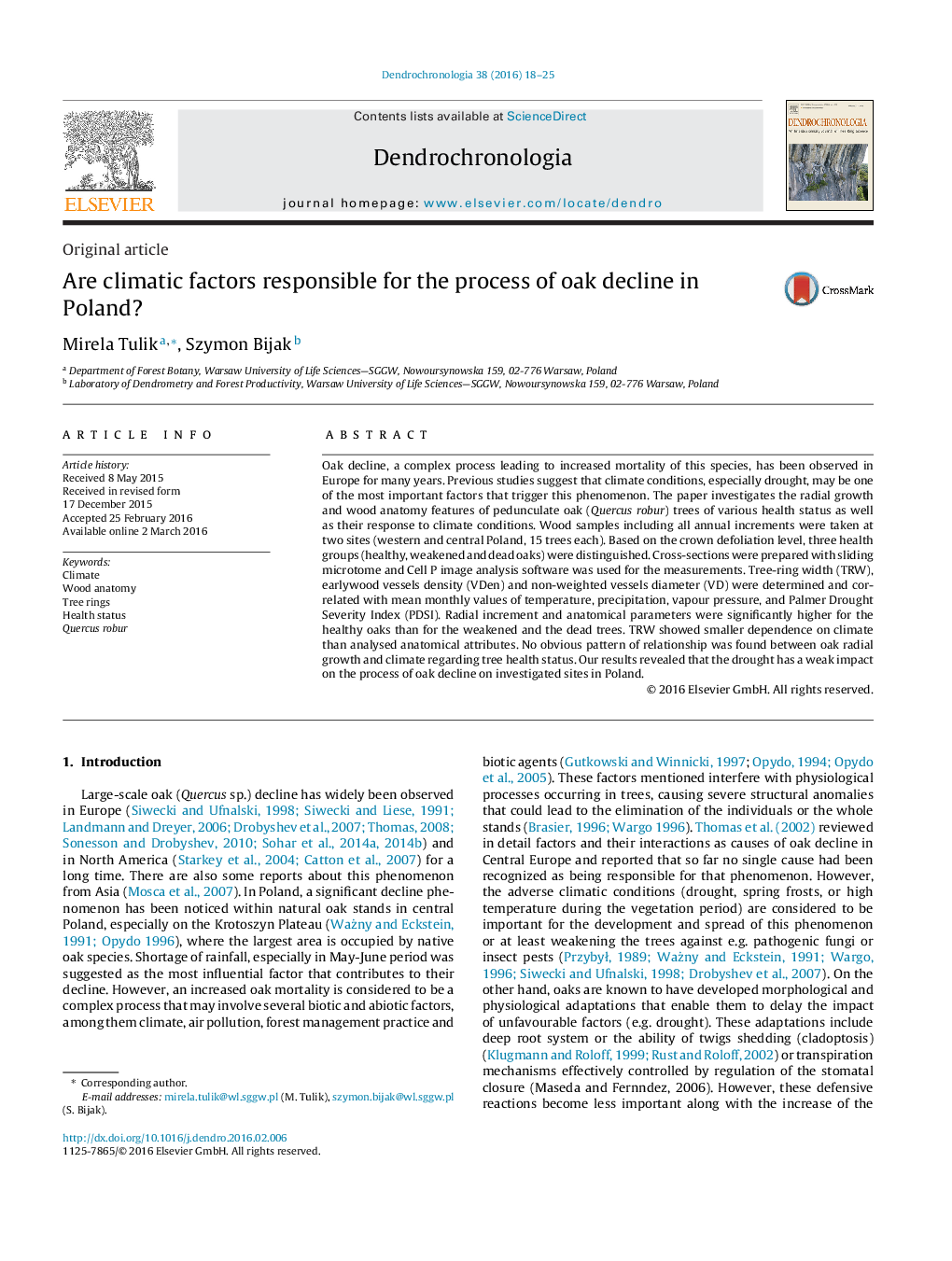| Article ID | Journal | Published Year | Pages | File Type |
|---|---|---|---|---|
| 6541355 | Dendrochronologia | 2016 | 8 Pages |
Abstract
Oak decline, a complex process leading to increased mortality of this species, has been observed in Europe for many years. Previous studies suggest that climate conditions, especially drought, may be one of the most important factors that trigger this phenomenon. The paper investigates the radial growth and wood anatomy features of pedunculate oak (Quercus robur) trees of various health status as well as their response to climate conditions. Wood samples including all annual increments were taken at two sites (western and central Poland, 15 trees each). Based on the crown defoliation level, three health groups (healthy, weakened and dead oaks) were distinguished. Cross-sections were prepared with sliding microtome and Cell P image analysis software was used for the measurements. Tree-ring width (TRW), earlywood vessels density (VDen) and non-weighted vessels diameter (VD) were determined and correlated with mean monthly values of temperature, precipitation, vapour pressure, and Palmer Drought Severity Index (PDSI). Radial increment and anatomical parameters were significantly higher for the healthy oaks than for the weakened and the dead trees. TRW showed smaller dependence on climate than analysed anatomical attributes. No obvious pattern of relationship was found between oak radial growth and climate regarding tree health status. Our results revealed that the drought has a weak impact on the process of oak decline on investigated sites in Poland.
Related Topics
Physical Sciences and Engineering
Earth and Planetary Sciences
Atmospheric Science
Authors
Mirela Tulik, Szymon Bijak,
